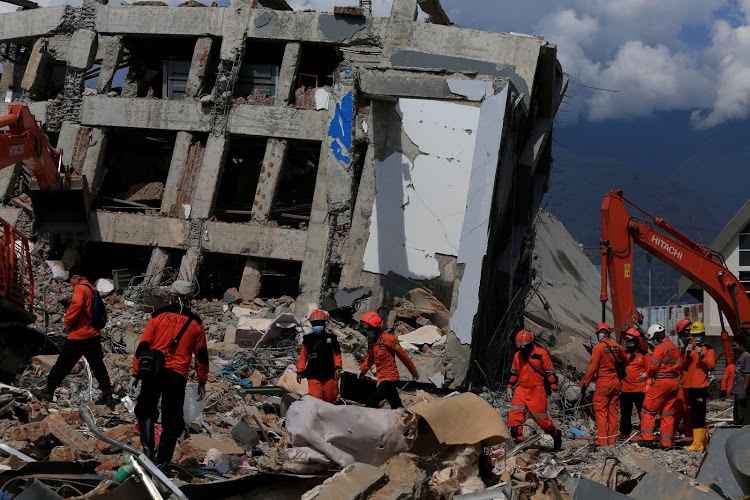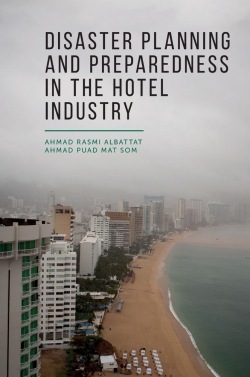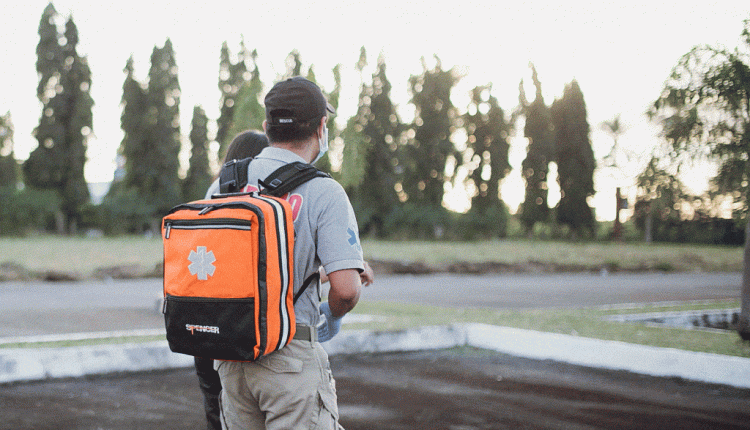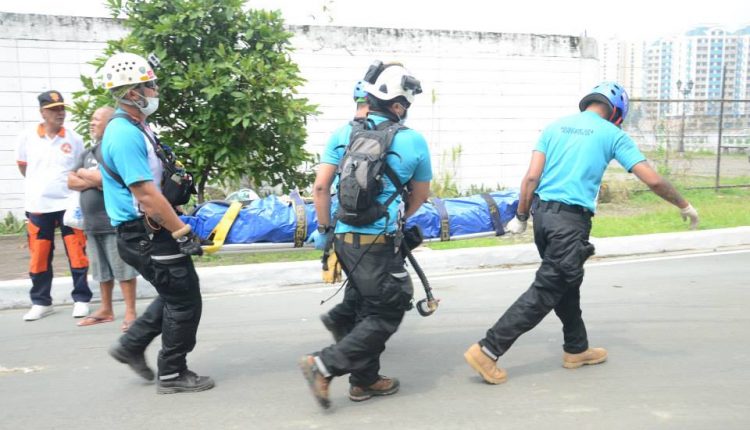
Emergency preparedness - How Jordanian hotels manage safety and security
Emergency Preparedness in hotels is essential to guarantee safety anytime in case of necessity. Jordan is taking precautions in order to manage and overcome emergencies in hotels when occurred.
Below we will talk about the identification of major emergencies that can occur and put Jordanian hotels in emergency and disaster situations. The matter is investigating on emergency preparedness of hotels, how they manage and overcome emergencies, and limitations or factors influencing successful emergency planning.
In this article, we will report what managers from three-, four- and five-star hotels in Amman and Petra said about emergency preparedness plans in their buildings. Results revealed that Jordanian hotels are exposed to a wide range of natural and man-made disasters. In a matter of emergency preparedness, Jordanian hotels lack proactive emergency planning and a set of constraints which impede successful emergency planning for disasters. This emphasizes on the relevant authority’s role to establish emergency management to hotels convincing them to take up such practices, thus they can be able to make do with emergencies effectively.
Emergency preparedness and disaster management in Jordan: how preventing massive casualties
Disaster management has become an important issue as hospitality key players seek ways to cope with these unexpected events, which confound threats to the viability of hospitality organizations (Ref. Mitroff, 2004), and create multiple challenges for the private and public sectors (Ref. Prideaux, 2004).
Kash and Darling (Ref. 1998) pointed out that the core of the resolution of a disaster is in the evaluating the current level of disaster planning and preparedness in the hospitality industry, and examining the relationship between organizational factors (type, size, and age), disaster planning activities and emergency preparedness.
Jordanian hotels have experienced a wave of disasters and emergencies in the last two decades. Overall, the period from 2000 to date has been affected by natural and man-made disasters, with political instability in the Middle East which influence Jordanian hotels negatively (Ref. Ali & Ali, 2011). Since September 11, 2001, at least 18 major terrorist incidents targeted the hospitality industry worldwide, including two conducted in Jordan (Rif. Paraskevas & Arendell, 2007).
This research aims to identify major emergencies that occurred in the hotel industry in Jordan investigating hotels preparation for emergencies in the past, and exploring how hotels manage and overcome such emergencies; and limitations that hotels encountered; the field of study is still largely unexplored in the Middle East context in general and in Jordan hotels specifically.
Emergency preparedness: planning means not managing disasters!
Emergency management can be a great challenge to any business, especially the hospitality industry regarding the bad situation from experiencing an emergency event far from home (Ref. Stahura et al., 2012). Scholars have argued that emergency managers should determine the best model or methodology when preparing for, reacting to, and recover from an emergency situation.
Quarantelli (Ref. 1970) mentioned in his continuing research that planning is not managing disasters, and future disasters are not a repeat of the past. Drabek (Ref. 1995) examined the level of emergency preparedness and evacuation planning for tourist businesses to determine the impact of planning on preparedness, forces, and lesson learnt such as action plans, who`s in charge, and communication.
The quality of emergency planning should be monitored, evaluated, and improved for several reasons. First, emergency management is not yet a fully-fledged profession (Ref. Crews, 2001), with a lack of adequate training and specialist knowledge for emergency planners. Second, inefficiency in emergency planning raises the mismatches between the procedures and available resources in balance with chronic emergency needs. Third, emergency planning should be a dynamic continuous process, since it’s become static it will be mutated to become dysfunctional (Ref. R. W. Perry & Lindell, 2003).
Good plans and teams are essential requirements for surviving from disasters. Hard work and many difficult decisions are very important in the case of emergency recovery. From the end of the post-emergency period until the reestablishment of the trend line emergency recovery involves all effort to deal, manage and recover from the disastrous situation.
A quick evacuation is an essential step of the chain. People with disabilities or injured people can have difficulties in escaping the building. That’s why hotels, like other public buildings, must be always equipped with the right devices in case of emergency.
Strategies for disaster management
In the wake of disasters, resource management and allocation are essential regarding the challenges facing the hotels in the pre-, during- and post-emergency based on flattening organization structure, the team dealing with emergencies (Ref. Burritt, 2002).
In the word of Fink (Ref. 1986) disaster management model, emergency management should start before the disaster happens and before it has its bite on the hotel industry. Emergency management could be divided into four stages: Prodromal, Acute, Chronic, and Resolution. He asserted that early warning signals for even repeated disasters are difficult to recognize. Moving from prodromal to acute stage, disaster start to cause damage and losses, the emergency preparedness level and the effectiveness of dealing with emergencies could be contributed to losses degree. In contrast, the chronic stage allows the organization to recover from the disaster and learn from the strengths and weaknesses in the emergency response plan.
In his model, Roberts (Ref. 1994) explained four stages of disaster management. The pre-event stage where the efforts to mitigate the impact of and to be prepared for the potential disaster. In the emergency stage, disaster happens and actions will be taken to rescue and save people and properties. In the intermediate stage, hotels provide short-term plans to restore essential services and overcome as quickly as possible. Finally, the long-term stage is where the repair of infrastructure using the long term strategies, and enhance the emergency plans to next emergency preparedness.
What are the reasons for emergencies in Jordanian hotels?
Respondents were requested to explain the types and magnitude of emergencies that happened in their hotels in the yesteryear.
The findings revealed that Jordanian hotels were threatened by several emergencies and political instability in the Middle East. The findings likewise indicated that terrorism, Amman bombings 2005, Libyan patient`s profile, financial problems, tax, pandemics, employee turnover, and natural threats were identified as major emergencies facing Jordanian hotels.
The findings also revealed that fires, poor maintenance management, low-quality security machines, and weak preparations were among the emergencies facing the hotel industry in Jordan with a negative impact on hospitality business, related industries, and the country`s economy. Respondents also were disappointed about the agreements conducted with the Libyan government to host and receive the injured patient’s full board in the Jordanian hotels promising them to pay the invoices within 14 days; they conclude that until now they only receive not more than 50% from their money after a series of auditing and discounts from the Libyan committees. Furthermore, the high cost of energy, high tax and pressure on services.
In the end, emergency preparedness and disaster management are the keys
Jordan has subsequently been struck by a range of disasters and emergencies. Reflecting the hotel industry vulnerability to hazardous events in the internal and external environment. This has caused dramatic fluctuations in Tourist arrivals and revenue. Events discussed in this research disclose a wave of disasters affecting the hotel industry in Jordan over the last few decades, which in turn affects the industry’s contribution to Jordanian GDP and reveals the multiplier effect on the economy.
The finding also emphasizes that the organization type, age, and size had a great impact on proactive planning irrespective of either the organization faced a disaster before or not. Emergency preparedness and an updated emergency plan with managers’ awareness will help the hospitality industry to provide the necessary resources, as well as effective training to avoid or minimize risks. Safety surveillance and security systems are germane to save guests’ lives and hospitality properties. These factors can also be used as a marketing tool for guests and meeting planners. Finally, it’s very important to understand the emerging frameworks to mitigate effects and be well prepared before the untold crisis.
Furthermore, to minimize losses during evacuation when the disaster happens. Effective proactive planning must exist at the governmental level and learning from the past to overcome the effect of such events. Quite unfortunately, this study found a dereliction to proactive emergency planning by the industry key players.
READ THE ENTIRE PAPER ON ACADEMIA.EDU
THE AUTHOR’S BIO
Dr Ahmad Rasmi Albattat – Assistant Professor in Post Graduate Centre, Management and Science.
 Dr Ahmad R. Albattat, is an Assistant Professor in Post Graduate Centre, Management and Science University, Shah Alam, Selangor, Malaysia. He is a visiting Professor and external examiner in Medan Academy of Tourism (Akpar Medan). He holds a doctoral degree in Hospitality Management from University Sains Malaysia (USM). He worked as an Assistant Professor, Ammon Applied University College, Amman, Jordan. Senior Lecturer and research coordinator in School of Hospitality & Creative Arts, Management and Science University, Shah Alam, Selangor, Malaysia, and Researcher at Sustainable Tourism Research Cluster (STRC), Pulau Pinang, Malaysia. He was working for the Jordanian hospitality industry for 17 years. He has participated and presented research papers in a number of academic conferences held in Malaysia, Taiwan, Thailand, Indonesia, Sri Lanka, and Jordan. He is an active member of Scientific and Editorial Review Board on Hospitality
Dr Ahmad R. Albattat, is an Assistant Professor in Post Graduate Centre, Management and Science University, Shah Alam, Selangor, Malaysia. He is a visiting Professor and external examiner in Medan Academy of Tourism (Akpar Medan). He holds a doctoral degree in Hospitality Management from University Sains Malaysia (USM). He worked as an Assistant Professor, Ammon Applied University College, Amman, Jordan. Senior Lecturer and research coordinator in School of Hospitality & Creative Arts, Management and Science University, Shah Alam, Selangor, Malaysia, and Researcher at Sustainable Tourism Research Cluster (STRC), Pulau Pinang, Malaysia. He was working for the Jordanian hospitality industry for 17 years. He has participated and presented research papers in a number of academic conferences held in Malaysia, Taiwan, Thailand, Indonesia, Sri Lanka, and Jordan. He is an active member of Scientific and Editorial Review Board on Hospitality  management, hotel, tourism, events, emergency planning, disaster management, human resource for Journal of Tourism Management, Journal of Hospitality Marketing & Management (JHMM), Current Issues in Tourism (CIT), Asia-Pacific Journal of Innovation in Hospitality and Tourism (APJIHT), International Journal of Economics and Management (IJEAM), AlmaTourism, Journal of Tourism, Culture and Territorial Development, International Journal of Tourism and Sustainable Community Development. His latest works have been published in the refereed international journals, conference proceedings, books and book chapters.
management, hotel, tourism, events, emergency planning, disaster management, human resource for Journal of Tourism Management, Journal of Hospitality Marketing & Management (JHMM), Current Issues in Tourism (CIT), Asia-Pacific Journal of Innovation in Hospitality and Tourism (APJIHT), International Journal of Economics and Management (IJEAM), AlmaTourism, Journal of Tourism, Culture and Territorial Development, International Journal of Tourism and Sustainable Community Development. His latest works have been published in the refereed international journals, conference proceedings, books and book chapters.
_________________________________________________________________
REFERENCES
- Al-dalahmeh, M., Aloudat, A., Al-Hujran, O., & Migdadi, M. (2014). Insights into Public Early Warning Systems in Developing Countries: A Case of Jordan. Life Sci Journal, 11(3), 263-270.
- Al-Rasheed, A. M. (2001). Features of Traditional Arab Management and Organization in the Jordan Business Environment. Journal of Transnational Management Development, 6(1-2), 27-53.
- Alexander, D. (2002). Principles of emergency planning and management: Oxford University Press, New York, USA.
- Alexander, D. (2005). Towards the development of a standard in emergency planning. Disaster Prevention and Management, 14(2), 158-175.
- Ali, S. H., & Ali, A. F. (2011). A Conceptual Framework for Crisis Planning and Management in the Jordanian Tourism Industry. Advances in Management.
- Burritt, M. C. (2002). The road to recovery: a look at the lodging industry, post-September 11. Real Estate Issues, 26(4), 15-18.
- Cashman, A., Cumberbatch, J., & Moore, W. (2012). The effects of climate change on tourism in small states: evidence from the Barbados case. Tourism Review, 67(3), 17-29.
- Chaudhary, C. (1991). Research Methodology. Jaipur: S. K. Parnami, R. B. S. A. Publishers.
- Cohen, E. (2008). Explorations in Thai tourism: Collected case studies (Vol. 11): Emerald Group Publishing.
- Coppola, D. P. (2010). Introduction to International Disaster Management: Elsevier Science.
- Crews, D. T. (2001). The case for emergency management as a profession. Australian Journal of Emergency Management, 16(2), 2-3.
- De Holan, P. M., & Phillips, N. (2004). Organizational forgetting as strategy. Strategic Organization, 2(4), 423-433.
- Drabek, T. (1995). Disaster responses within the tourist industry. International Journal of Mass Emergencies and Disasters, 13(1), 7-23.
- Dynes, R. (1998). “Coming to terms with community disaster”, in Quarantelli, E.L. (Ed.), what Is a Disaster? Perspectives on the Question, Routledge, London, Pp. 109-126.
- Evans, N., & Elphick, S. (2005). Models of Crisis Management: an Evaluation of their Value for Strategic Planning in the International Travel Industry. International Journal of Tourism Research, 7, 135-150. doi: 10.1002/jtr.527
- Faulkner, B. (2001). Towards a framework for tourism disaster management. Tourism Management, 22(2), 135-147. doi: 10.1016/s0261-5177(00)00048-0
- Fink, S. (1986). Crisis Management: Planning for the Inevitable. New York, NY: American Management Association.
- Gheytanchi, A., Joseph, L., Gierlach, E., Kimpara, S., & Housley, J. F. (2007). The dirty dozen: Twelve failures of the Hurricane Katrina response and how psychology can help. American Psychologist, 62, 118-130.
- Helsloot, I., & Ruitenberg, A. (2004). Citizen response to disasters: a survey of literature and some practical implications. Journal of Contingencies and Crisis Management, 12(3), 98-111.
- Hystad, P. W., & Keller, P. C. (2008). Towards a destination tourism disaster management framework: Long-term lessons from a forest fire disaster. Tourism Management, 29(1), 151-162.
- Ichinosawa, J. (2006). Reputational disaster in Phuket: the secondary impact of the tsunami on inbound tourism. Disaster Prevention and Management, 15(1), 111-123.
- Johnston, D., Becker, J., Gregg, C., Houghton, B., Paton, D., Leonard, G., & Garside, R. (2007). Developing warning and disaster response capacity in the tourism sector in coastal Washington, USA. Disaster Prevention and Management, 16(2), 210-216.
- Kash, T. J., & Darling, J. R. (1998). Crisis management: prevention, diagnosis and intervention. Leadership & Organization Development Journal, 19(4), 179-186.
- Low, S. P., Liu, J., & Sio, S. (2010). Business continuity management in large construction companies in Singapore. Disaster Prevention and Management, 19(2), 219-232.
- Mansfeld, Y. (2006). The role of security information in tourism crisis management: the missing link. Tourism, Security & Safety: From Theory to Practice, Butterworth-Heinemann, Oxford, 271-290.
- Mitroff, I. I. (2004). Crisis leadership: Planning for the unthinkable: John Wiley & Sons Inc.
- Paraskevas, A., & Arendell, B. (2007). A strategic framework for terrorism prevention and mitigation in tourism destinations. Tourism Management, 28(6), 1560-1573. doi: http://dx.doi.org/10.1016/j.tourman.2007.02.012
- Parker, D. (1992). The mismanagement of hazards. London: James and James Science Publishers.
- Paton, D. (2003). Disaster preparedness: a social-cognitive perspective. Disaster Prevention and Management, 12(3), 210-216.
- Patten, M. L. (2007). Understanding research methods: An overview of the essentials: Pyrczak Pub.
- Perry, R., & Quarantelly, E. (2004). what is Disaster? New Answers to Old Questions. Xlibris Press, Philadelphia, PA.
- Perry, R. W., & Lindell, M. K. (2003). Preparedness for emergency response: guidelines for the emergency planning process. Disasters, 27(4), 336-350.
- Pforr, C. (2006). Tourism in post-crisis is tourism in pre-crisis: A Review of the Literature on Crisis Management in Tourism: School of Management, Curtin University of Technology.
- Pforr, C., & Hosie, P. J. (2008). Crisis Management in Tourism. Journal of Travel & Tourism Marketing, 23(2-4), 249-264. doi: 10.1300/J073v23n02_19
- Prideaux, B. (2004). The Need to Use Disaster Planning Frameworks to Respond to Major Tourism Disasters. Journal of Travel & Tourism Marketing, 15(4), 281-298. doi: 10.1300/J073v15n04_04
- Quarantelli, E. L. (1970). A Selected Annotated Bibliography of Social Science Studies on Disasters. American Behavioral Scientist, 13(3), 452-456.
- Richardson, B. (1994). Socio-technical disaster: profile and prevalence. Disaster Prevention and Management, 3(4), 41-69. doi: doi: 10.1108/09653569410076766
- Riley, R. W., & Love, L. L. (2000). The state of qualitative tourism research. Annals of Tourism Research, 27(1), 164-187.
- Ritchie, B. (2004). Chaos, crises and disasters: a strategic approach to crisis management in the tourism industry. Tourism Management, 25(6), 669-683. doi: http://dx.doi.org/10.1016/j.tourman.2003.09.004
- Rittichainuwat, B. (2005). Understanding perceived trvel risk differences between first time and repeat travelers. Paper presented at the 3rd global summit on peace through tourism-education forum: one earth one family: Travel & Tourism-serving a higher purpose, Pattaya, Thailand.
- Roberts, V. (1994). Flood Management: Bradford Paper. Disaster Prevention and Management, 3(2), 44 – 60. doi: 10.1108/09653569410053932
- Sabri, H. M. (2004). Socio-cultural values and organizational culture. Journal of Transnational Management Development, 9(2-3), 123-145.
- Sandelowski, M. (1995). Sample size in qualitative research. Research in nursing & health, 18(2), 179-183.
- Sawalha, I., Jraisat, L., & Al-Qudah, K. (2013). Crisis and disaster management in Jordanian hotels: practices and cultural considerations. Disaster Prevention and Management, 22(3), 210-228.
- Sawalha, I., & Meaton, J. (2012). The Arabic culture of Jordan and its impacts on a wider Jordanian adoption of business continuity management. Journal of business continuity & emergency planning, 6(1), 84-95.
- Stahura, K. A., Henthorne, T. L., George, B. P., & , & Soraghan, E. (2012). Emergency planning and recovery for terror situations: an analysis with special reference to tourism. Worldwide Hospitality and Tourism Themes, 4(1), 48-58.
- The United Nation Office for the Coordination of Humanitarian Affairs. (2012). Country Fact Sheet – Jordan. Cairo, Egypt.
- The United Nations Development Programme. (2010). Support to Building National Capacity for Earthquake Risk Reduction at ASEZA in Jordan. Aqaba, Jordan.
- Walle, A. H. (1997). Quantitative versus qualitative tourism research. Annals of Tourism Research, 24(3), 524-536.




